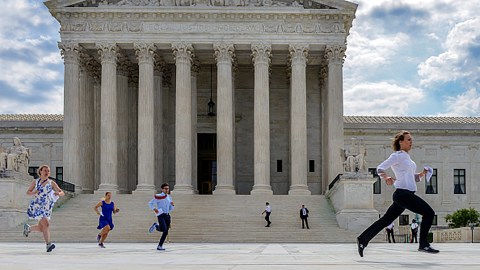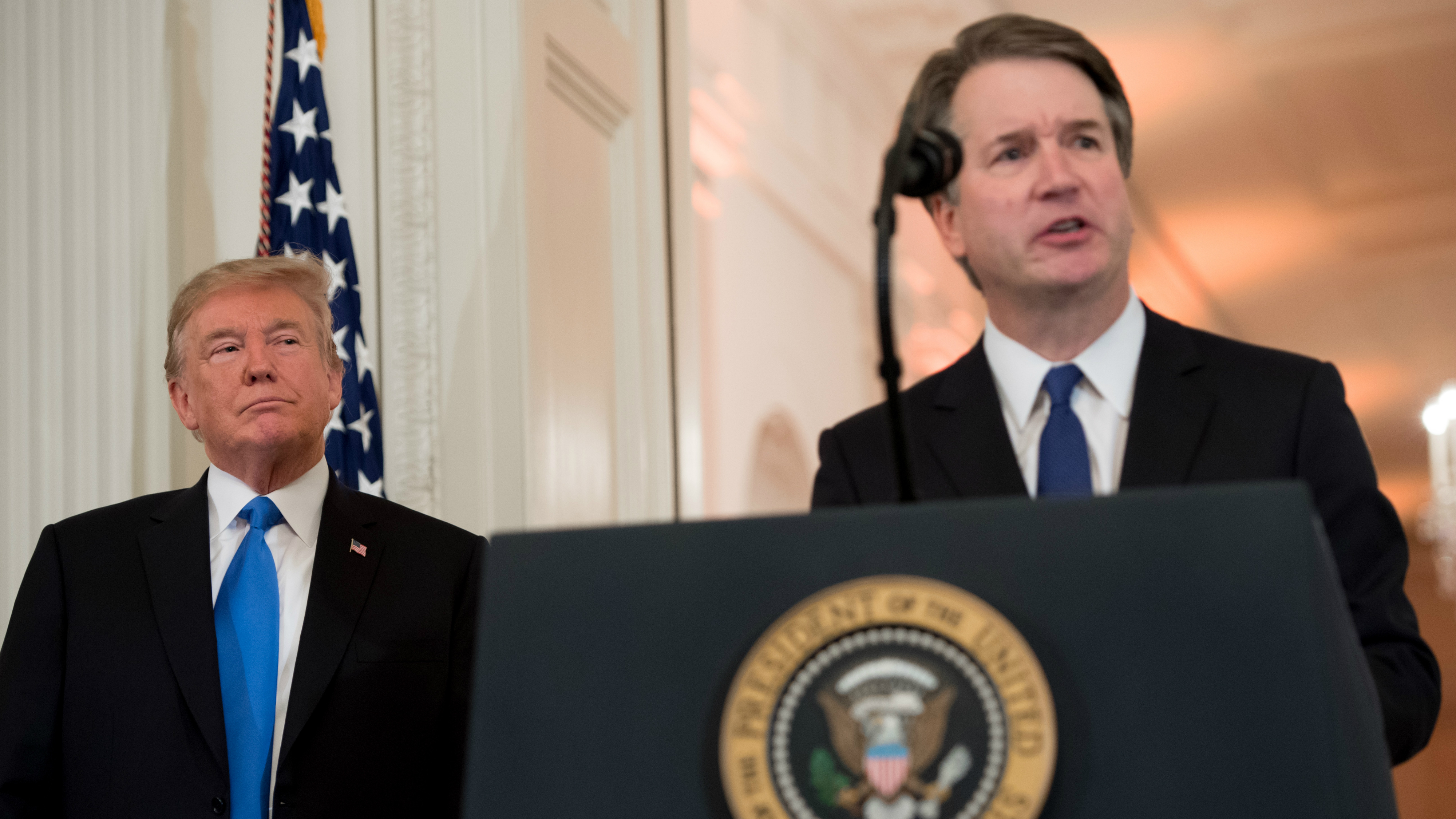A Supreme Court Quiz: How Much Do You Know About the Nation’s Highest Court?

In my new book on the Supreme Court, which comes out today, I note that very few Americans know very much about the highest tribunal in the land. Only two-thirds can name a single Supreme Court justice, and only 1 in 100 can rattle off the names of all nine.
This is no shock. Unlike presidents, whose faces we couldn’t erase from our minds if we wanted to, Supreme Court justices are rarely seen. Cameras are not allowed in the courtroom, and the justices typically make prime-time TV only once a year: during the president’s annual State of the Union address, when they sit in the audience, berobed and stone-faced (and sometimes doze off). Several justices typically bow out of this affair, preferring to watch the chief executive’s remarks from the privacy of their homes, or not at all.
But it seems prudent for citizens to have at least a passing familiarity with the institution tasked with deciding whether they should be able to get married, or have health care, or say nasty things in public.
So to celebrate my book’s release, here is a little quiz to test your SCOTUS (Supreme Court of the United States) knowledge.
The Questions
1. True or False: The number of Supreme Court justices is set in the Constitution.
2. Which one of the following people was NOT a Supreme Court justice?
a. John Marshall
b. Preston Funkybottom
c. John Marshall Harlan
d. John Marshall Harlan II
3. True or False: Supreme Court justices must have law degrees.
4. The motto etched above the entrance to the Supreme Court’s building in Washington, D.C. is:
a. “All men are created equal”
b. “Equal justice under law”
c. “Clear eyes, full hearts can’t lose”
5. The following figures are all depicted in friezes inside the Supreme Court building EXCEPT:
a. Moses
b. Muhammad
c. Hammurabi
d. Jesus
6. The average age of the current justices is:
a. 60
b. 65
c. 70
d. 110
7. How many cases do the justices decide each year?
8. What is the salary of a Supreme Court justice?
The Answers
1. True or False: The number of Supreme Court justices is set in the Constitution.
Answer: False. Congress gets to decide how many souls sit on the bench. The original number set in 1789 was six, but Congress added seats, one by one, until it reached 10 in 1863. The court was then pared to seven justices and expanded to nine, where it has remained since 1869.
2. Which one of the following people was NOT a Supreme Court justice?
a. John Marshall
b. Preston Funkybottom
c. John Marshall Harlan
d. John Marshall Harlan II
Answer: (b). All those John Marshalls did in fact serve on the court. John Marshall Harlan II, who served from 1955-1971, a conservative on the liberal Warren court, was the grandson of the first, who sat on the bench from 1877-1911. Neither is any relation to the fourth chief justice, John Marshall, who served from 1801–1835 and authored the famous Marbury v. Madison ruling establishing the power of judicial review. Sir Funkybottom has yet to join the court.
3. True or False: Supreme Court justices must have law degrees.
Answer: False. “The Constitution does not specify qualifications for Justices such as age, education, profession, or native-born citizenship. A Justice does not have to be a lawyer or a law school graduate, but all Justices have been trained in the law. Many of the 18th and 19th century Justices studied law under a mentor because there were few law schools in the country” (from the Supreme Court website)
4. The motto etched above the entrance to the Supreme Court’s building in Washington, D.C. is:
a. “All men are created equal”
b. “Equal justice under law”
c. “Clear eyes, full hearts can’t lose”
Answer: (b).
5. The following figures are all depicted in friezes inside the Supreme Court building EXCEPT:
a. Moses
b. Muhammad
c. Hammurabi
d. Jesus
Answer: (d). Some may find it surprising that the founder of Islam is represented while the founder Christianity is not. Why not? The figures represented were all lawgivers, and Jesus doesn’t fit the bill.
6. The average age of the current justices is:
a. 60
b. 65
c. 70
d. 110
Answer: (d). Just kidding: (c). Justices on the left and right are getting up there: Ruth Bader Ginsburg is 82, while Antonin Scalia and Anthony Kennedy are both 79. Stephen Breyer is close behind them at 77. John Roberts, the chief justice who just celebrated his first decade at the helm, is a youthful 60. The youngest justice is also the most recent addition: Elena Kagan, at 55.
7. How many cases do the justices decide each year?
Answer: In recent terms, between 70-80 cases. Last year they issued written opinions in only 66. Some people wonder why the Supreme Court docket has shrunk so precipitously from a height of 215 in 1940. It’s not from a lack of appeals: each year about 10,000 petitions for review are filed, of which the justices accept less than 1 percent.
8. What is the salary of a Supreme Court justice?
Answer: $244,400, though the chief justice makes $255,500. By comparison, the president’s salary is $400,000 and members of Congress make $174,000.
* * *
No matter how you did on the quiz, you might find something of interest in American Justice 2015: The Dramatic Tenth Term of the Roberts Court. As the Supreme Court correspondent for The Economist magazine, I was fortunate to attend the historic hearings in the same-sex marriage case, among many others, and my book recaps the year by explaining the arguments and implications of cases involving the freedom of speech, religious discrimination, racial equality, the separation of powers, and Obamacare. It also highlights big cases to watch out for in the Supreme Court’s new term. I hope you will have a look.
—
Steven V. Mazie is Professor of Political Studies at Bard High School Early College-Manhattan and Supreme Court Correspondent for The Economist. He holds an A.B. in Government from Harvard College and a Ph.D. in Political Science from the University of Michigan.
Image credit: shutterstock.com
Follow Steven Mazie on Twitter: @stevenmazie





